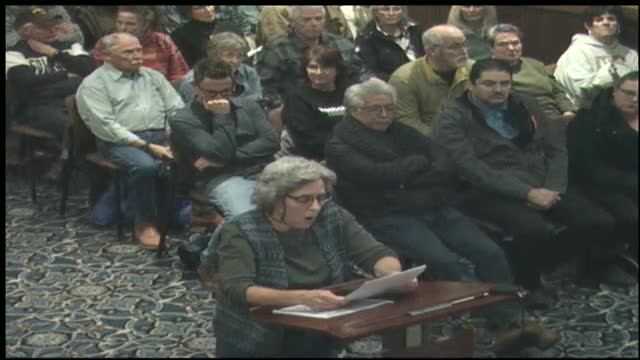Sheridan residents voice concerns over west side corridor plans amid developer influence
January 20, 2025 | Sheridan, Sheridan County, Wyoming
This article was created by AI summarizing key points discussed. AI makes mistakes, so for full details and context, please refer to the video of the full meeting. Please report any errors so we can fix them. Report an error »

In the heart of Sheridan's city hall, a palpable tension filled the air as residents gathered to voice their concerns over the proposed west side corridor project. The meeting on January 20, 2025, became a platform for passionate discussions, highlighting the community's unease regarding the alignment and its potential impacts.
One resident, expressing skepticism, questioned the council's transparency and decision-making process. "Why should the citizens of Sheridan trust any of your plans on the west side corridor?" they asked, pointing out that the alignment had been altered without public notification and now traversed a landslide-prone area. This sentiment echoed throughout the evening, as many voiced their apprehensions about the project’s implications for property values, agricultural land, and increased traffic.
Margaret McGee, another concerned citizen, brought attention to a petition from the previous year that gathered 188 signatures opposing a related grant application. She emphasized that the community's concerns seemed to be overlooked, recalling historical discussions about the corridor dating back to 1982. "Here we are today with many of these same valid concerns," she lamented, urging the council to consider alternative routing options that had been dismissed.
The dialogue shifted to the influence of developers in the planning process. McGee raised eyebrows over the support from local developers, suggesting that their interests were prioritized over those of the residents. "The west side corridor should be named a development corridor," she asserted, questioning whether the current plans truly served the community or merely facilitated profit for a select few.
As the meeting progressed, the council members listened intently, acknowledging the residents' frustrations. The discussions underscored a critical need for collaboration between city officials and county commissioners, particularly regarding projects that significantly affect both urban and rural residents.
In the backdrop of these discussions, the city’s land use plan, updated in 2019, was cited as a guiding document that appeared to conflict with the current grant application. McGee highlighted goals within the plan that called for preserving transportation corridors and ensuring that new developments contribute to necessary infrastructure improvements.
As the meeting drew to a close, the residents left with lingering questions about the future of the west side corridor. The council's next steps would be crucial in addressing the community's concerns and rebuilding trust. The outcome of this project could shape Sheridan's landscape for years to come, making it imperative for city leaders to engage transparently with their constituents moving forward.
One resident, expressing skepticism, questioned the council's transparency and decision-making process. "Why should the citizens of Sheridan trust any of your plans on the west side corridor?" they asked, pointing out that the alignment had been altered without public notification and now traversed a landslide-prone area. This sentiment echoed throughout the evening, as many voiced their apprehensions about the project’s implications for property values, agricultural land, and increased traffic.
Margaret McGee, another concerned citizen, brought attention to a petition from the previous year that gathered 188 signatures opposing a related grant application. She emphasized that the community's concerns seemed to be overlooked, recalling historical discussions about the corridor dating back to 1982. "Here we are today with many of these same valid concerns," she lamented, urging the council to consider alternative routing options that had been dismissed.
The dialogue shifted to the influence of developers in the planning process. McGee raised eyebrows over the support from local developers, suggesting that their interests were prioritized over those of the residents. "The west side corridor should be named a development corridor," she asserted, questioning whether the current plans truly served the community or merely facilitated profit for a select few.
As the meeting progressed, the council members listened intently, acknowledging the residents' frustrations. The discussions underscored a critical need for collaboration between city officials and county commissioners, particularly regarding projects that significantly affect both urban and rural residents.
In the backdrop of these discussions, the city’s land use plan, updated in 2019, was cited as a guiding document that appeared to conflict with the current grant application. McGee highlighted goals within the plan that called for preserving transportation corridors and ensuring that new developments contribute to necessary infrastructure improvements.
As the meeting drew to a close, the residents left with lingering questions about the future of the west side corridor. The council's next steps would be crucial in addressing the community's concerns and rebuilding trust. The outcome of this project could shape Sheridan's landscape for years to come, making it imperative for city leaders to engage transparently with their constituents moving forward.
View full meeting
This article is based on a recent meeting—watch the full video and explore the complete transcript for deeper insights into the discussion.
View full meeting